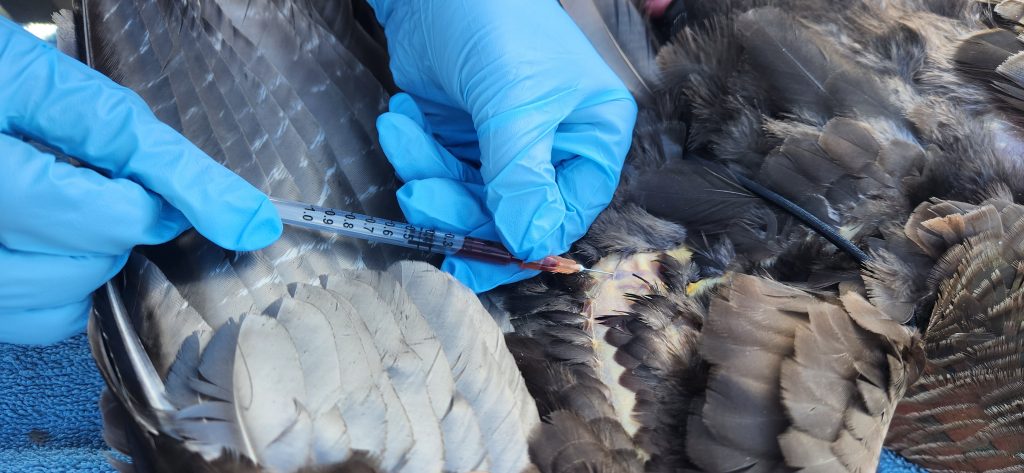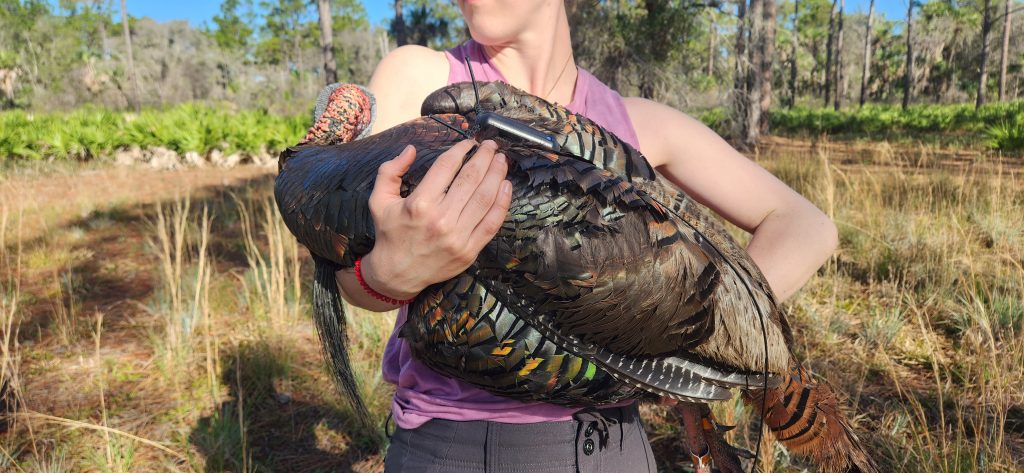Ongoing Florida Study Explores the Impact of Habitat Quality and Feeding on Wild Turkeys
What factors determine whether wild turkey populations flourish or decline? That’s the driving question behind a new multi-year study underway in Florida, led by Marcus Lashley, Ph.D., associate professor at the University of Florida, and his team at UF.
Conducted in partnership with the Florida Fish and Wildlife Conservation Commission and the National Wild Turkey Federation, the study takes a deep dive into understanding how habitat quality and supplemental feeding affects the survival, nesting success and overall population trends of wild turkeys.
For decades, habitat improvement has been a foundational strategy in wild turkey conservation. However, no one has yet compiled and analyzed the breadth of existing research to create a comprehensive, science-based guide to understanding how habitat management influences wild turkey survival, nesting and reproduction.
The first phase of this study, launched in 2024, is doing just that. Postdoctoral researcher Elizabeth Leipold, Ph.D., under the guidance of Dr. Lashley, is combing through nearly five decades of published studies, theses and dissertations — from the 1970s to today — to evaluate how vegetation structure and habitat management practices influence wild turkey vital rates, which refers to factors such as nesting success, brood rearing and poult survival.
“This effort will quantify and consolidate into a single document our current knowledge of the role that vegetation structure and habitat management practices play in determining vital rates within wild turkey populations,” Lashley said. “Despite commonly recommending habitat management practices for wild turkey management, there currently has been no formal evaluations of how vegetation structure and habitat management affects vital rates across studies. This product would provide managers with key information to guide habitat management recommendations.”
Using a statistical tool known as “life-stage simulation analysis,” the team will project how turkey populations are likely to grow — or decline — under different habitat scenarios over a 10-year period. These projections will give wildlife managers a powerful, data-driven tool to guide their habitat strategies. Importantly, this tool will allow managers to determine if habitat management activities are enough to reverse population trajectory in areas where turkeys are declining.
The second phase of the study, launching in winter 2025 and spanning three field seasons, will explore the largely uncharted effects of corn feeding on wild turkeys — an increasingly common practice among landowners that has raised both interest and concern.
“Despite the rise in popularity of supplemental feeding and baiting coinciding with turkey declines in many states, little research has focused on how feeding practices affect turkeys directly,” Lashley said. “There is a near complete absence of data connecting feeding practices to actual wild turkey vital rates. Data from this study will inform private landowners and policy makers on the potential effects of this practice to wild turkeys.
This phase of the study will focus on four potential ways that wildlife feeders might impact wild turkey populations:
- Nutrition and Reproduction: Does easy access to food lead to healthier turkeys, larger clutches and better nesting success?
- Disease: Are feeders hotspots for pathogens like coccidia, which have been shown to spread more easily where animals congregate?
- Contaminants: Do feeders expose turkeys to harmful aflatoxins in spoiled corn?
- Predation: Are feeders drawing in predators like raccoons and crows that threaten nests and poults?
To answer these questions, researchers will trap wild turkeys in the research areas, assess their physical condition through a multitude of tests and monitor predator presence using camera traps and acoustic recording devices.


As wild turkey populations shift across parts of the Southeast, science-driven solutions are more critical than ever. The results of this study will inform habitat restoration efforts, shape feeding policies and help ensure the long-term health of wild turkey populations and the hunting traditions for future generations.
The NWTF invested $655,447 into the above project along with eight other wild turkey research projects for the organization's 2024 allocation.
Since 2022, with partner funds leveraged at more than a 10-to-1 ratio, the NWTF, its chapters, members and partners have combined to put more than $18 million toward wild turkey research. This number will increase as the NWTF's national Science and Planning team is slated to fund more wild turkey research projects this year.
Thanks to support from dedicated partners — such as the Bass Pro Shops and Cabela’s Outdoor Fund, Mossy Oak and NWTF state chapters — the RFP program is an aggressive, annual effort to fund critical wild turkey research projects nationwide.
